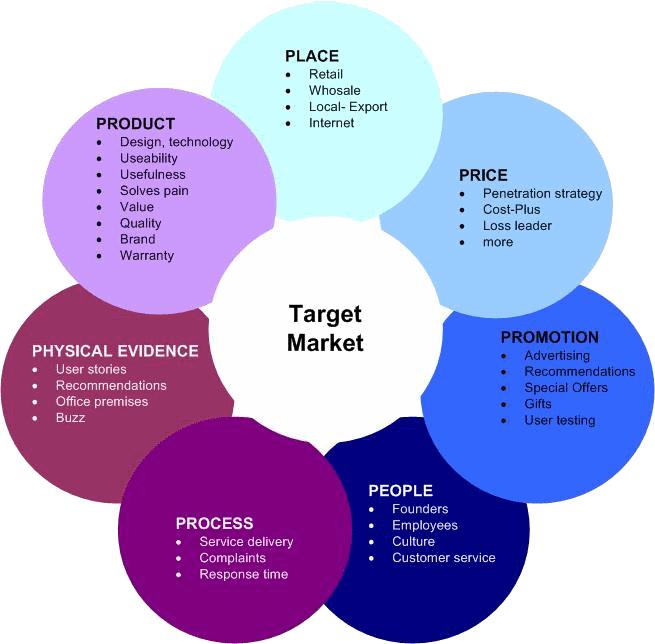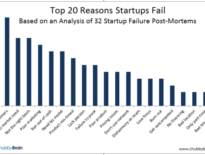
Here’s the thing, I suck at golf and as an entrepreneur’s entrepreneur, I can’t fathom making myself available for 5 hours to putt around a golf course.
Yet, succeeding as a founder might be as commonplace as hitting a hole in one… very least, it’s fair to say you have to shoot par.
Rest assured, if you’re completely lost in my golf references, we’re not going there.
I’m just teeing you up.
Let’s talk about one of the questions that eludes almost every startup founder: how do I figure out my addressable market??
Article Highlights
Getting to Know Your Market
Way too many founders relegate Marketing to the budget allocation made once you have a product ready to sell; this approach is how startups fail. Marketing is one of the most important things a business does.
You have to know your audience in order to address it. Let’s look at part of that process in what’s called market segmentation.
Startup pitch decks suggest you present your market size and while many do that by merely conveying a number that hints at how large is the market in which they find themselves, the better approach is to dig into your TAM/SAM/SOM.
Step 1: Total Addressable Market
You need to figure out your TAM so that you can start segmenting. An important point to keep in mind though (way too many startup pitches screw this up): No one actually cares how big your market is.
Starting with my golf analogy ask, “how many golf balls are there in the world?” This is how many balls are pertinent to what you are doing. Notice already, you’re not in the game of footballs or frisbees.
Step 2: Servicable Market
Now work out your Serviceable Market. Your SAM. This is how many golf balls are at the club you’re playing. It’s more reasonable that you could hit all those balls, eventually; that’s where you play. Now we’ve distinguished not just golf but that your sandtrap is the UT Golf Club.
Segmentation.
Step 3: Target Market
Wait, I thought we called it “SOM”
We did. Technically, it’s referred to as your Serviceable Obtainable Market but that’s confusing as technically it’s just where you are focusing your attention as you can best acquire customers therein – it’s your target market.
You can’t reasonably expect anyone to swallow that you’ll hit all the balls in the clubhouse either. Or rather, appreciate that while you could do that, that’s an efficient use of your time getting your startup on the green, no? Explaining the market you COULD address is little more valuable than your Total Addressable Market. To even start getting an assessment of you as a good golfer, I want to know how many golf balls are in your bag. That’s your Target Market. Follow? Those are the balls you CAN take a swing at. Tiger Wood probably carries 3 balls in his bag, he really knows his market. You might have an extra bag because you find yourself in the water a lot. How defined we find your Target Market reflects your sophistication.
Is that really all though??? Of course not…
Is this a 9 hole course or 18? Executive course? Maybe it’s drought season and the grass is dry and water hazards empty. All of those factors matter as they refine how we perceive your understanding of how many of those balls you’re going to need to get through the game.
Step FORE: Profile
Maybe you prefer Titleist. Why?
Maybe you have one of those practical joke balls that explode in your bag so you can give it to your competitor. If your bag has 3 Titleists and that’s what you prefer, but the Target Market has 10 Nike balls, KNOW THAT. See the concern and opportunity? Your Target Market has an audience that favors an approach a little different from your favoritism of Titleist. Further, profile the balls not in your Target. Maybe there are 1000 Ping balls at the clubhouse, in your Serviceable Market…
What happens if your 13 end up in the water and you’re stuck buying a different ball… a ball for which there is a much larger market… can you afford to get them?
THAT’S the segmentation that matters. And to be clear, you couldn’t have done that without first identifying that you’re in the golf ball market; as well as studying all of that to know which golf balls might be the ideal target, given how you play the game.
Now, as anyone who has watched Caddyshack knows (one of the quintessential startup films), you have to address the ball.
“Hello ball”
What happens if you address the ball and tee off with a putter?
I don’t care that you have the ideal ball and that you know it intimately.
*putt*
Your competitor steps up… has a segmentation that slightly differs, they prefer using a range ball that they stole yesterday, you know the orange kind with the two lines on it; but it’s a ball that works. They pull out their King Cobra and *bam*
Little bit of a slice but that will play.
You forgot to be the ball.
The spot in the tee box, the right tee, the right target market, the right club, just the right swing…
Knowing your customer is so critical, not just to selling your product or service to them but in knowing what product or service to offer, that your really shouldn’t even be playing the game if you haven’t done this. While tee’ing up with a baseball bat and baseball might get the ball further down the fairway, you can’t get it in the hole.
Everything you do as a startup begins and ends with market segmentation and the profiling we’ve just touched on can get quite elaborate so that you can best address the ball. Here, just a couple different ways to start profiling your market and potential customers so that you can play a better game. Learn more here.
Market Segmentation
- Geographic segmentation.
- Demographic segmentation.
- Psychographic segmentation.
- Behavioral segmentation.
- Other types of consumer segmentation.
- Criteria for evaluating segment attractiveness.
- A-priori segmentation.
Hopefully that helps. At least we’re all slightly better golfers.




Just started working on this to decide if an idea is worth my continued pursuit. Thanks for info!
Go outside the rooms, go to the field and understand your customers.
Another gold nugget
Hey @seobrien can you read my mind? This is the second time in 7 days that you published something right when we needed content to share with someone asking a question. #Synchronicity This is a great article that an #entrepreneur applying to our #accelerator should know.
Nice TAM/SAM analogy Paul O’Brien.
Paul O’Brien your timing is impeccable. I’m currently working on a guide to calculating consumer surplus (to help people applying to Sputnik), which includes knowing the size of your market. We’d like to link to your article if that’s okay. I think it will help.
Paul, I’ve been struggling with this concept of segmenting and this piece really helped me to understand it better. Thanks for sharing!
Paul, that Honeymooner clip is way too close to reality!
I’ve posted this for my marketing students to see given their lack of comprehension about addressable markets.